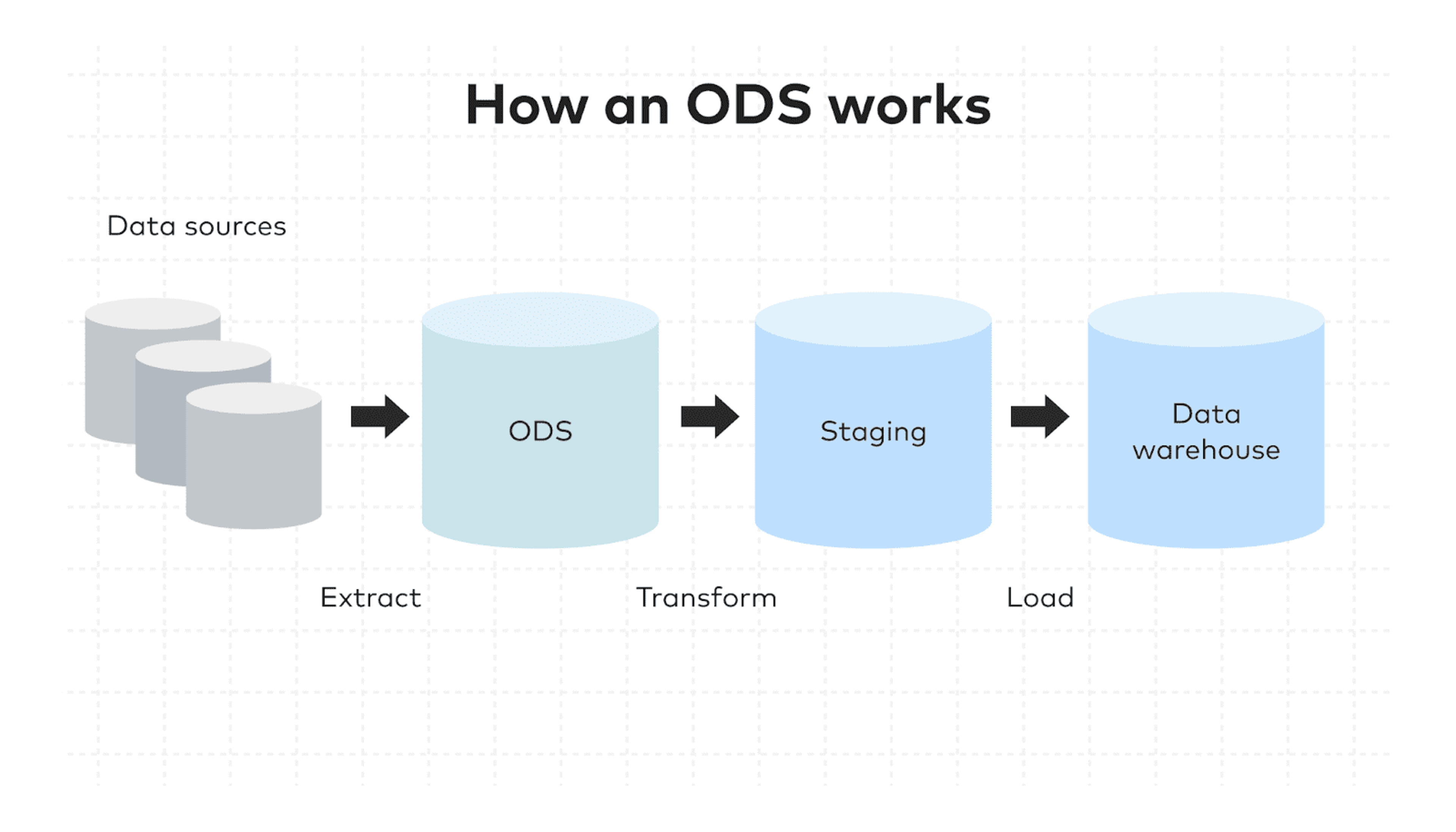blog
Do You Need An Operational Data Store?

SECTIONS
Today’s healthcare and life sciences landscapes are fast-moving, and their pace of business is continually accelerating. To navigate this environment successfully, many organizations in both sectors are turning to operational data store (ODS) systems.
Operational data stores serve as a bridge between transactional data systems critical to daily operations, and data warehouses that eventually store the data long-term. They deliver real-time insights needed to make smart and proactive business decisions and operate with agility at all times.
Today, ODS systems are a critical piece to the puzzle when it comes to ensuring data flows seamlessly across an organization, and that teams have quick access to the data they need to keep the organization running smoothly.
In this guide, we’ll cover everything you need to know about how operational data stores work, where they fit into larger data management strategies, and why they are becoming a must-have for healthcare and life sciences organizations in the future.
Quick Takeaways:
- Operational data stores centralize and standardize data from disparate sources in real time.
- For healthcare and life sciences organizations, ODS can drive both better operational efficiency and higher quality service/care.
- Key benefits of an operational data store include: real-time reporting, seamless data integration, expedited insurance claims processing, operational optimizations, and enhanced compliance.
- Before implementing an operational data store, it’s important to evaluate current data needs and internal infrastructure and expertise.
- A third-party expert partner can help you implement an ODS when needed.
What Is An Operational Data Store?
An operational data store is a centralized repository that enables employees to access real-time data from separate transactional systems before it moves to long-term storage in a data warehouse.
Here’s how it works:
When data is generated (i.e. when a transaction takes place), it quickly moves from the source system to the ODS system. There, it’s standardized and made accessible to individuals who need it in order to make decisions. After a period of time (varies by organizations) data warehouses then pull the data from ODS systems to be permanently stored.

Image Source: fivetran.com
Some organizations choose to move data from ODS systems to data warehouses in near real-time as new data comes in.
For example, an inventory manager would want inventory numbers to be continually replaced so that inventory-related decisions are based on accurate data. For healthcare and life sciences organizations, it’s more common to maintain historical data for a period of time in the ODS before it goes to a warehouse.
In those cases, data is usually moved at scheduled intervals (i.e. weekly or monthly) depending on the time required for processing and analysis. The frequency of data transfer is also impacted by factors like data volume, data transformation complexity, and resource availability.
7 Benefits of Operational Data Stores for Healthcare and Life Sciences Organizations
Real-Time Reporting
Physicians, medical staff, and care team members need to make split-second decisions all the time when caring for patients. Their decisions are often profoundly influenced by a patient’s past medical history, and they need fast access to information about things like allergies, past incidents, ongoing medications, and the like.
An ODS allows for immediate access to this vital information, ensuring care decisions aren’t hampered by delays in data retrieval.
Data Integration
Today, patients often have touchpoints with multiple healthcare providers, both within a larger provider system or from multiple systems when needed. This diversity of care provision requires that patient data can be continually centralized and accessed in a single place.
For example: With an ODS system in place, a primary care physician should have real-time access to a patient’s recent specialist visits, prescription refill activity, emergency visits, etc. Rather than having to source data from several internal and external sources, they can maintain a complete view of patient history in one place.
This cohesion leads to better diagnostic accuracy and a more holistic approach to patient care, which can have a positive effect on patient adherence and outcomes.
Daily Operational Support
Beyond the immediacy of patient care, ODS systems can enable smoother internal operations for large and complex healthcare institutions. From scheduling appointments to allocating resources to bed management to billing (and more), real-time data from an ODS makes for more efficient workflows and better communication between those making key operational decisions.
An ODS’s capacity to integrate and present data in real-time can also be a strategic asset. By enabling healthcare providers to identify trends, monitor resource utilization, and even predict potential patient needs, it supports proactive management and planning.
Expedited Claims Processing
Delays or inaccuracies in the claims process can erode trust with members and damage an insurance provider’s reputation with partners. With ODS in place, claims can be processed at an enhanced speed without sacrificing accuracy and precision.
ODS systems facilitate easier cross-referencing of claims with existing health records so discrepancies can be flagged earlier and legitimate claims are processed expeditiously.
Member Analysis
With healthcare shifting towards a more personalized approach, providers and insurers need to maintain deeper insights into their members’ health patterns and needs. The market for personalized healthcare, from diagnostics to therapeutics to medical care to nutrition, are on the riseOpens in a new tab, indicating personalization will also be a competitive imperative for organizations going forward.

Image Source: grandviewresearch.com
An ODS can aggregate data to offer a panoramic view of the patient journey, from clinic visits to staff interactions (i.e. calls and emails) to insurance claims to medication histories (and more). These insights enable insurance providers to tailor policies, anticipate healthcare needs, and perhaps even introduce proactive measures to improve member health outcomes.
Regulatory Compliance
The healthcare and life sciences sectors are underpinned by complex regulations and guidelines that change often over time. The ODS serves as a robust resource in this regard. By continuously integrating and updating data in real-time, it ensures that organizations can remain abreast of current guidelines, facilitating adherence and reducing the risk of regulatory noncompliance.
Research and Development
The foundation of life sciences is its commitment to groundbreaking research and development (R&D). Integrating diverse datasets—be it from clinical trials, patient feedback, or novel research—is critical. An ODS can seamlessly combine all of this information to facilitate more informed, strategic R&D decisions.
Market Analysis
The success of any product in the life sciences sector hinges on its alignment with market needs. ODS, by consolidating data, gives organizations a sharp view of the current market landscape—highlighting patient needs, healthcare trends, and potential gaps. This rich set of insights enables companies to tailor their products and services adeptly, ensuring they resonate with their target audience.
Key Considerations for Adopting an Operational Data Store
The benefits of an ODS system for healthcare and life sciences organizations are clear—but there are also important considerations to keep in mind as you plan for implementation.
Existing Data Needs
Every organization has its own unique and distinct data demands. Before adopting an ODS system, it’s imperative to ascertain what specific data challenges your organization aims to address and how ODS can be tailored to meet these needs.
Then, you can set specific goals for your ODS system to help you achieve, and make a customized plan for implementation.
Cost-Benefit Analysis
Implementing any new technology tool comes with its set of costs. While the benefits often outweigh implementation-related expenses, organizations should take time to analyze immediate and long-term financial implications to ensure your ODS investment yields the desired return.
Technical Infrastructure & Expertise
Implementing and maintaining an ODS isn’t a simple task. It demands a solid technical backbone and a team well-versed in ODS nuances. Assess if your organization has this infrastructure in place or if you’ll need support from an external partner to execute successfully.
Over To You
Operational data stores have the potential to make a transformative impact on your organization’s ability to use data every day to optimize operations and provide exceptional service and care. Gaine’s Coperer platform includes a profile-based Operational Data Store that enables the integration of master data and affiliated data in real-time.
Coperer can also be deployed right out-of-the-box. If you’re ready to implement an ODS and master data management system to enhance your data-driven strategy and operations, get in touch with us today.
